Invertebrate Diseases
Dermo, Perkinsus marinus
Common name: Dermo
Scientific name: Perkinsus marinus
Host species: Eastern Oyster
Salinity and Temperature range:Proliferation of Dermo disease is high at >25C, Range 18-32C2. 13-28ppt2
Lifecycle: Protozoan apicomplexan/dinoflagelate.2 Die-offs from August-November.3 Are phagocytized, and multiply inside these cells and burst to find a new cell.2
Diagnosis: Ray-Mackin Assay, qPCR, PCR (for just presence/absence), histology.
Treatment: Once infected, Oysters cannot be cured. If oysters survive the dermo infection, they will live with low levels of dermo for the rest of their lives. Parasites proliferaste rappidly in warm waters, but in cold waters the oyster is able to start to rid itself of some particles. Perform diagnostic tests before moving any oysters between sites to prevent spreading of dermo to a clean site, or movement of clean oysters to a "dirty" site.2
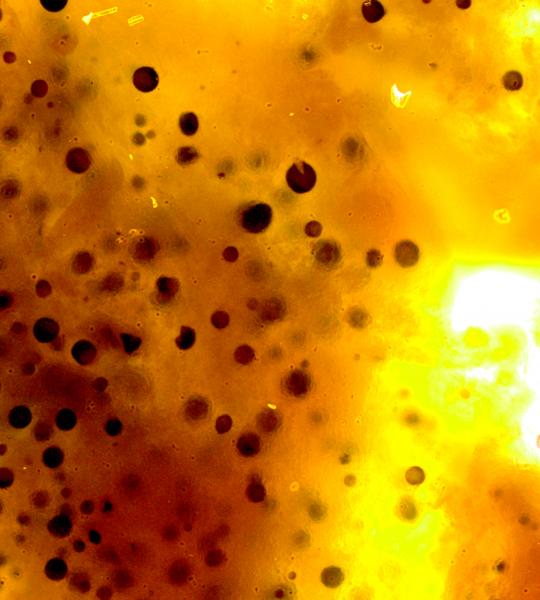
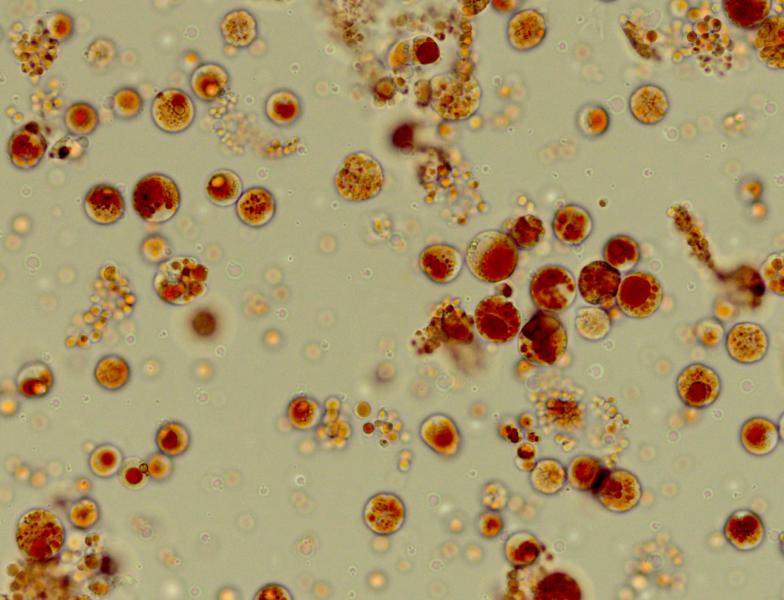
Dermo spores in tissue, stained with Iodine Dermo cells in culture, stained
JOD, Roseovarius crassostreae
Common name: JOD, Juvenile Oyster Disease
Scientific name: Roseovarius crassostreae
Host species: Eastern Oyster
Salinity and Temperature range: 18-26 degrees C3, 25-32 ppt3
Diagnosis: Deeply cupped left valve, retracted mantle 1, and brown inner shell deposits (conchiolin).2
Treatment:Affects rapidly growing oysters, once highest mortality episodes are passed, oysters resume growth normally, even though it may not be as robust as clean counterparts.3 Only found in densly cultured oyseters - spread them out!3 Increase water circulation, reduce density. If oysters are >25mm before June, JOD will only minimally impact stock.1
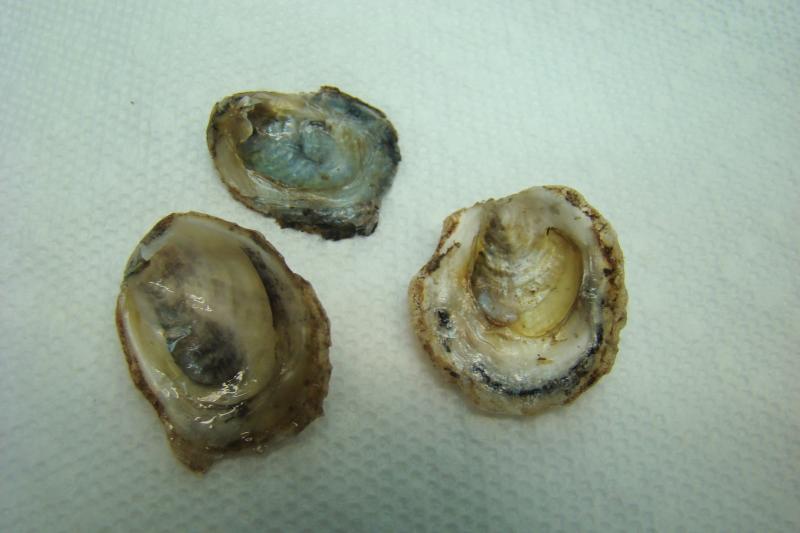
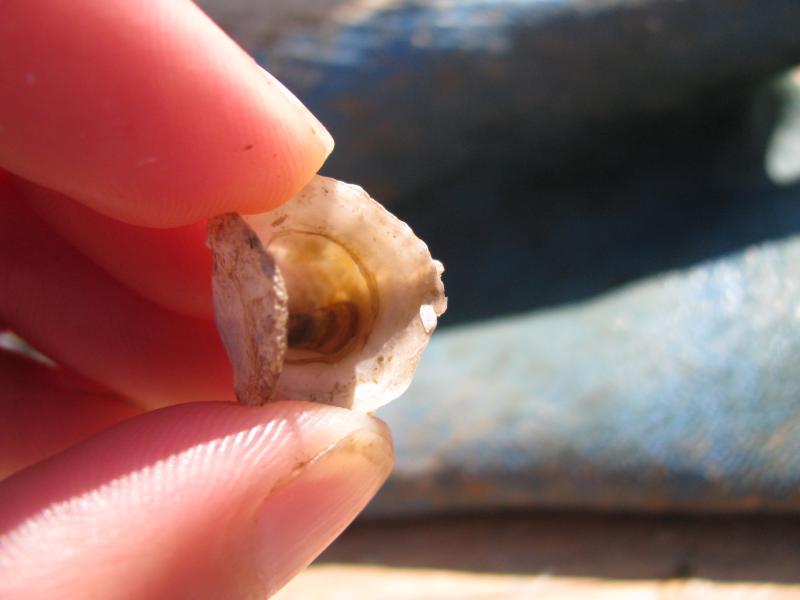
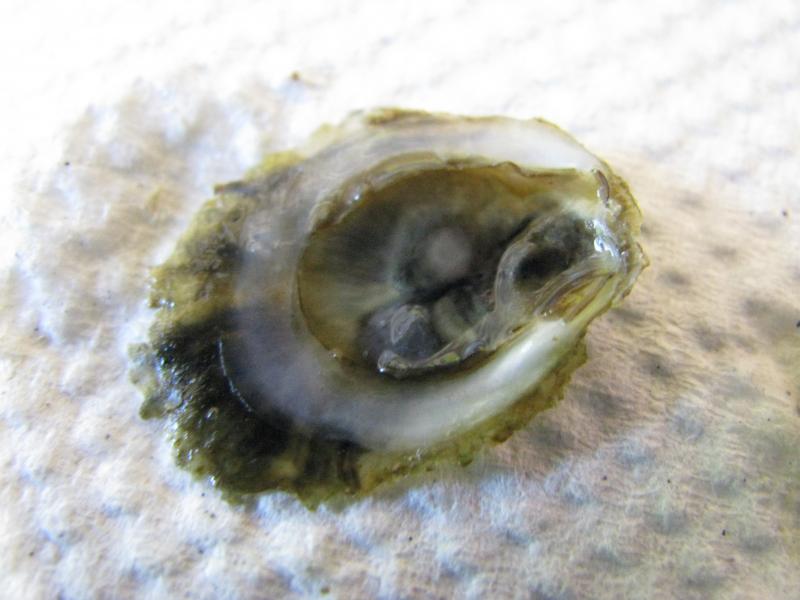
Pictures show gross signs of JOD infections: conchiolin rings (deposits on inside of valves). Diagnosis requires histology and/or PCR
MSX, Haplosporidium nelsoni
Common name: MSX, Multinucleated Sphere Unknown
Scientific name: Haplosporidium nelsoni
Host species: Eastern Oyster
Salinity and Temperature range: 5-20 C, 10-20ppt1
Lifecycle: spore-forming protozoan, two hosts.3 Die-offs in August-November3
Diagnosis: Histology, hemolymph screening. Gross examination shows pale digestive gland, mantle recession, emaciation, and increased hemocytes.2
Treatment: Some MSX resistant stocks have been cultivated.2
SSO, Haplosporidium costale
Common name: SSO, Seaside Organism
Scientific name: Haplosporidium costale
Host species: Eastern Oyster
Salinity and Temperature range: >20ppt.1 Temperature unknown
Lifecycle: Synchronous sporulation, two hosts (second host is unknown).2 High die-offs in March-June2
Diagnosis: Histology, PCR, hemolymph screening.
Treatment: Management of stocks to minimize time at peak SSO proliferation.1 Keeping oysters at lower salinities prevents the disease.2
QPX, Quahog Parasite Unknown
Common name:QPX, Quahog Parasite Unknown
Scientific name: Not assigned
Host species: Hard Clam
Salinity and Temperature range: >30ppt.1
Diagnosis: Diagnosis shows nodules on mantle, slow growth and chipped shells2
Treatment: Prevention by having lower stocking densities 50- 75 animals/ft2 for 15mm seed.1, 3

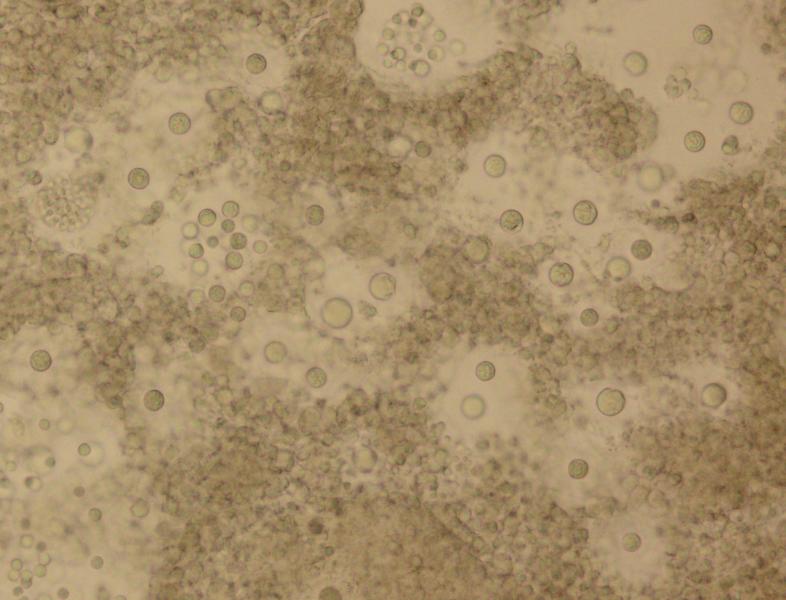
QPX cells in culture QPX cells in tissue, showing the mucus halo
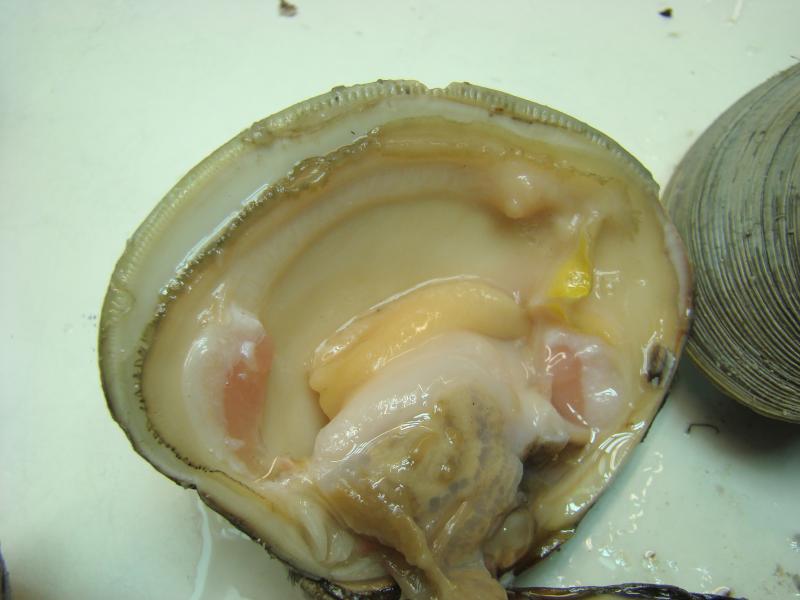
Infected clam with QPX a large nodule on mantle near the base of the siphon (common location for nodules)
Hemocytic Neoplasia
Common name: Hemocytic neoplasia, Hemic/Haemic/Hematopoetic neoplasia, Hemocytic leukemia
Scientific name: Not assigned
Host species: Soft Shell Clam, Hard Shell Clam
Salinity and Temperature range:
Lifecycle: Cells invade blood and uncontrollable multiply.1 These cells eventually invade tissue cells.5
Diagnosis: Gross examinations may show watery tissues.4 Hemacytology and Histology.3 Infected cells will have large nuclei and are larger than normal cells.1 Causes functional hemocyte cells to turn non-functional.6
Treatment: No known treatment, as not much is fully understood. Depending on the infection level, some clams are able to survive from low levels of infection.2
Vibrio
Common name: Vibrio
Scientific name: Vibrio anguillarum, Vibrio alginolyticus
Host species: Bivalve Larvae
Salinity and Temperature range:
Lifecycle:
Diagnosis: Gran negative rods. Culture samples in TCBS bacteriological medium.1
Treatment: Investigate hygienic procedures and water source for possible sources of vibrio. Remove contaminated broodstock and larval cultures, and reduce stress on larvae in general.1
Bonamiosis, Bonamia ostreae
Common name: Bonamiosis
Scientific name: Bonamia ostreae
Host Species: Eastern Oyster
Salinity and Temperature range: High summer water temperatures, nearing 25°C, does not favor infection of oysters. This parasite has trouble proliferating at lower salinity ranges.1
Lifecycle: Unknown outside of host. Transmission occurs as a result of cohabitation where the parasite can move directly from host to host within the water column.2
Diagnosis: This parasite specifically infects the host’s hemocytes and due to its small size it is difficult to identify microscopically. A PCR assay can be used to detect the presence Bonamia ostreae.
Treatment: Screen animals for possible infection if they are going to be moved to parasite free areas as a preventative method to discourage the spread of the disease.
Mycobacterium spp.
Common name: Mycobacteria
Scientific name: Mycobacterium spp.
Host Species: Atlantic Sea Scallops
Salinity and Temperature range: N/A
Lifecycle: Suggested route of infection is through the gastrointestinal tract in sea scallops.1
Diagnosis: Orange nodules are observed macroscopically in the soft tissue of infected scallops, most often in the adductor muscle. Microscopically, the nodules have been shown to contain rod-shaped bacteria that stain acid-fast and Gram-positive.1
Treatment: N/A

